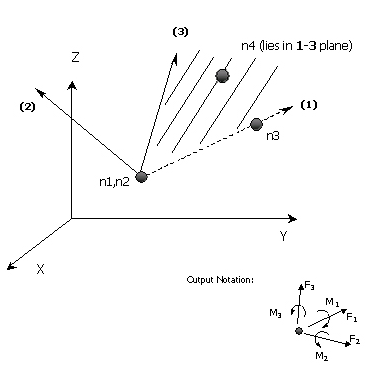Dashpot damping - dashpt
This is a two-node damping element, which may be employed to represent a linear dashpot between any two given nodes, e.g. it can be used to represent a damper installed on a steel brace. Damping coefficients may be defined on all six global degrees-of-freedom, though, commonly, dampers will work only in one or two directions. The dashpot accounts for the relative motion between two element nodes, in order to calculate the dashpot forces.

Notes
- In SeismoStruct, dampers are normally modelled by means of link elements with adequate response curves that may be able to characterise the non-velocity-dependent (at least within the typical range of earthquake velocities) force-displacement relationship of a given damper. However, in those cases where velocity dependence is important, this dashpt element may be employed instead, noting that currently only a linear force-velocity relationship is featured.
- This dashpt element may also be employed whenever the need arises for the introduction of a Maxwell model (i.e. series coupling of damping and stiffness), by placing in series a link and a dashpt element. For a Kelvin-Voigt model (i.e. parallel coupling of damping and stiffness), one may again make use of a link element, this time placed in parallel with a dashpt, though in these cases it may result easier to simply assign directly to the link element a given viscous damping value.